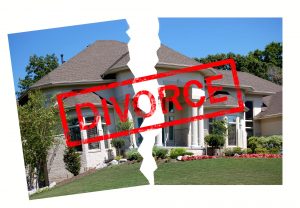Dividing Property in Divorce – Basic introduction
 Dividing property in divorce is first of all the question of jurisdiction – what court can do it. When you are divorcing in California, the court will have jurisdiction to divide up your property. Most assets in which either spouse has an interest in are property subject to division upon divorce. This means any real or personal property. However, certain property rights may not be subject to division by a court in a divorce.
Dividing property in divorce is first of all the question of jurisdiction – what court can do it. When you are divorcing in California, the court will have jurisdiction to divide up your property. Most assets in which either spouse has an interest in are property subject to division upon divorce. This means any real or personal property. However, certain property rights may not be subject to division by a court in a divorce.
Dividing Property in Divorce- assets not subject to division by a court in a divorce
- Professional education. An advanced degree like a medical or law degree is not subject to division by a divorce court.
- Accrued vacation time that can’t be taken as cash is not divisible. But accrued vacation pay is divisible.
- Term insurance. Some courts consider it property while others do not. It will depend upon where you file your divorce.
Dividing Property in Divorce – Community Property/ Separate Property definition
Community property is all property (can include money), either real or personal, wherever located, acquired by a married person during their marriage while they live in California.
Separate property is all property that you own before marriage and bring to the marriage.
Dividing Property in Divorce – Characterization challenge
Dividing Property in Divorce might have some challenges because some property is not easy to characterize.
Some property in which you own, such as your house, may have a document indicating ownership. In that case, after 1984, the property you acquire during the marriage in the joint form of any kind is presumed to be community property.
That presumption may only be rebutted by evidence of a contrary agreement or understanding, not by tracing the funds used to purchase the property or by evidence of a spouse’s undisclosed intention at the time of execution.
Dividing Property in Divorce depends on when do you acquire the property.
Property acquired before marriage is the separate property of the acquiring spouse.
Anything you acquire during marriage and before you separate from your spouse is presumed to be community property. You can overcome this presumption by tracing the acquisition of the item back to your separate property.
Property you acquire during the marriage but after you separate from your spouse is ordinarily separate property.
Dividing Property in Divorce is also depends on how do you acquire the property.
Any gift or inheritance you receive either before or while married is going to be separate property.
Many assets, such as investments or rental property, will generate profits or other income. Such money or property generated by other property will usually take on the character of the assets from which they derive. In other words, if you own a bond that is your separate property, the interest payments generated will be your separate property.
While married, any property purchased with borrowed money will be presumed to be community property. But if you can prove that a loan was made on the separate assets and credit of one spouse, then the property acquired by the loan will be that spouse’s separate property.
Dividing Property in Divorce using tracing method.
Since property acquired during marriage is presumed to be community property, the party claiming that a particular asset is separate property, must be able to show the source of that asset. The spouse must show where that property came from– trace it to its source.
In many situations, your separate property can be mixed with community property.
For example, you have a bank account before marriage, and after you get married, you deposit your earnings into the account and use that account to pay your joint bills.
Is the account still separate property or has it become community property?
What is the proportion?
What if you use of funds in that account to make a down payment on a house?
If you can’t clearly identify the separate property source, then the community property presumption will prevail.
There are two methods used to trace separate property when it has been commingled with community property.
Under the direct tracing method, you must prove a direct link to the separate property and the funds used to purchase it from the commingled account.
The second method looks at your family living expenses and presumes they are paid out of community funds. If it can be shown that, when you purchased the asset, all community income in the commingled account has been exhausted by family expenses, the remaining funds will be separate property.
Dividing Property in Divorce such as retirement plan
Your pension, vested or not, is a community property asset if it was derived from employment while you were married.
- In a 401(k)-like plan, the amount of contributions made between the marriage and separation, and any earnings, plus earnings after the separation and before trial, will be community property.
- With a typical pension plan, the non-employee spouse can elect to get a portion of the benefits when their ex-spouse retires. Or they can choose to get the money now and receive the present value of half the community interest in the plan.
The amount attributable to community property is the proportion of the time married to the total employment multiplied by the benefits payable.
714-390-3766